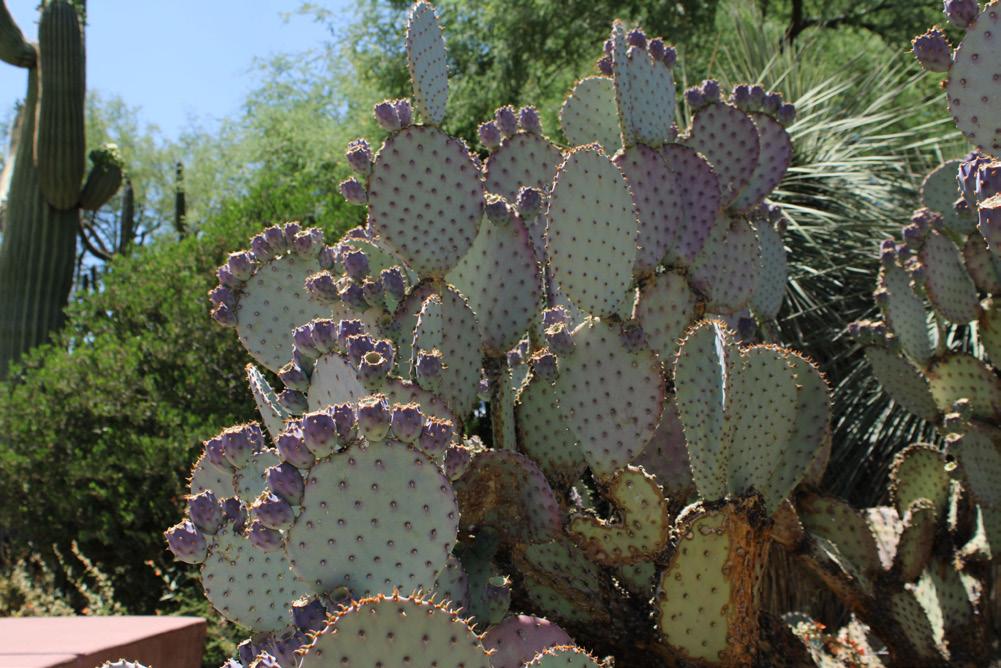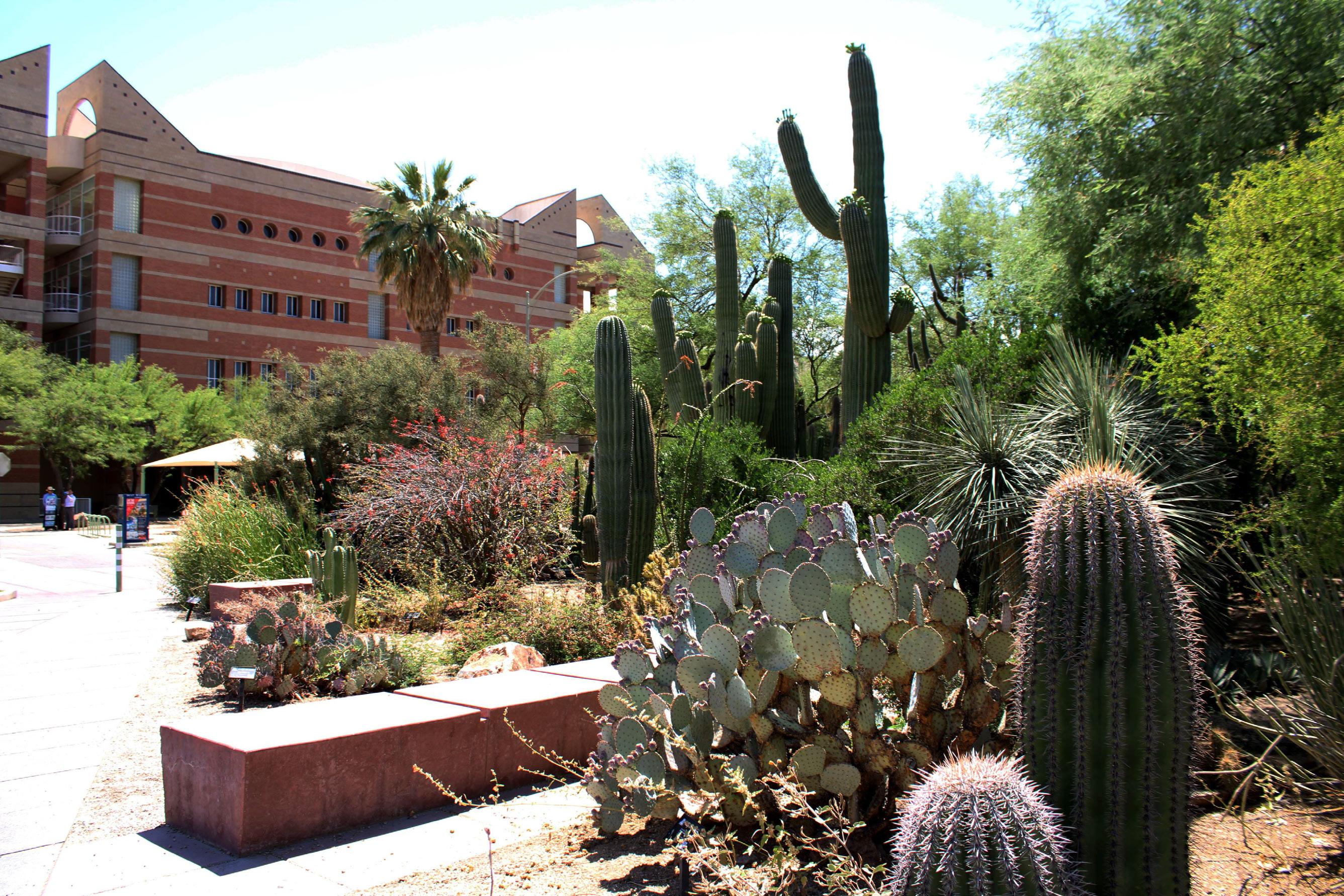














Vice-Provost, Campus Life and Dean of Students








Arizona Student Media
888 N. Euclid Ave. Room 301
P.O. Box 210158 Tucson, AZ 87721
Editor:
Susan Bollin McMillan Director
Arizona Student Media/Advisor, The Arizona Daily Wildcat. sbmcmillan@arizona.edu
520-621-3408
Contributing Writers:
Susan McMillan - Director, Arizona Daily Wildcat
Valeria Nalani - Arizona Daily Wildcat
Caitlyn Murphy - Arizona Daily Wildcat
Andrea Campos - Arizona Daily Wildcat
Emilee Cueninck - Arizona Daily Wildcat
Advertising/Marketing:
Mark Marrero
Advertising and Sales Manager
Arizona Student Media markmarrero@arizona.edu 520-621-5982
Nancy Greene Business Manager
Arizona Student Media nancygreene@arizona.edu
Design and Production:
Amaan Mulla - Lead Design
Mrunali Yadav - Co- Lead Design
Mariana Corella - Designer
Asif Hasan Zeshan - Designer








Freshman year of college is often accompanied by a wide array of emotions, ranging from excitement to terror — sometimes even simultaneously. Adjusting to an unfamiliar environment can be challenging, especially when new classes and responsibilities are thrown into the mix.
Miles Fraser is a junior majoring in creative writing. When it comes to starting college, he recommended being friendly with everyone to help form connections but also to understand that it is fine to rely on family and other friends outside of the UA to cope with being away from home for the first time.
“Call your friends, call your parents, anyone; they

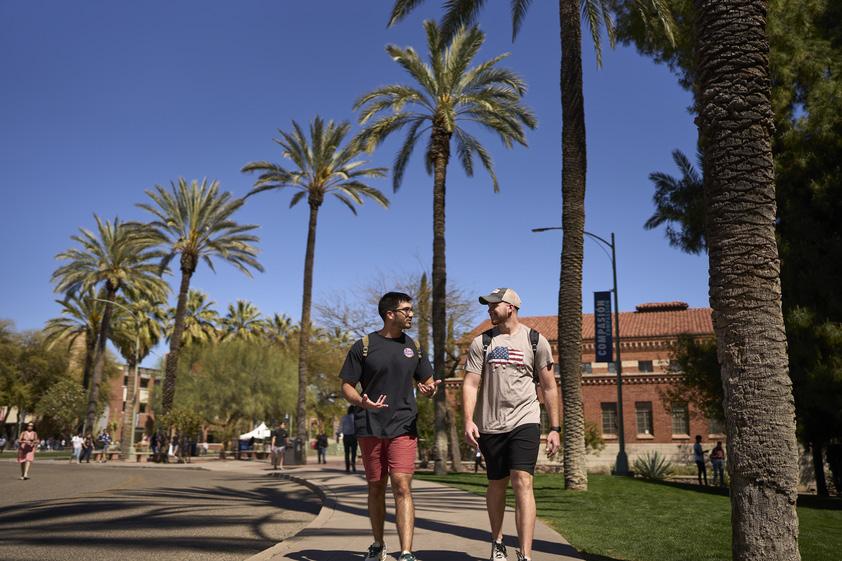







Some must-visit attractions around Tucson that Fraser endorsed include hiking Mount Lemmon and Tucson’s Sentinel Peak, commonly known as “A” Mountain. A hidden gem he and his friends loved during their freshman year includes the Arizona hockey games accessible via the Sun Link streetcar. Located in the Tucson Convention Center, the first 200 CatCard holders get in free! “Lots of energy and free for students even if you don’t have the pass. Just a great time all around,” Fraser said.
His best study tip is to take advantage of the library and all the resources and activities advertised on bulletin boards. He suggests making an effort to attend events that are interesting. Looking back at his recently completed freshman year, Fraser wishes that he had taken advantage of the club fair at the start of the semester and joined more clubs. “Don’t be nervous. At the University of Arizona, you have thousands of kids who are in your exact shoes, and even though it might not seem that way, it’s true,” Fraser said. “Make friends, talk to people in line in the Union, shoot your shot, don’t be shy.”
Olivia Brodersen recently graduated with a degree in molecular and cellular biology. Her top study tip is to ask all kinds of questions, no matter if they appear to be silly or dumb. She also recommends the Brightspace Pulse mobile app that is connected to D2L. Users can find due dates, check grades and set reminders with just one click. Brodersen also emphasized the importance of making connections during college.















One thing that Scarbrough utilized to make the transition to college easier that she wished she had known about sooner was the university peer mentor programs available. “As soon as I joined one, I felt a lot better, and the transition was much easier,” Scarbrough said. “It's a great way to meet new people as well.” Scarbrough’s best tip for staying on top of academics is to develop good study habits immediately.

















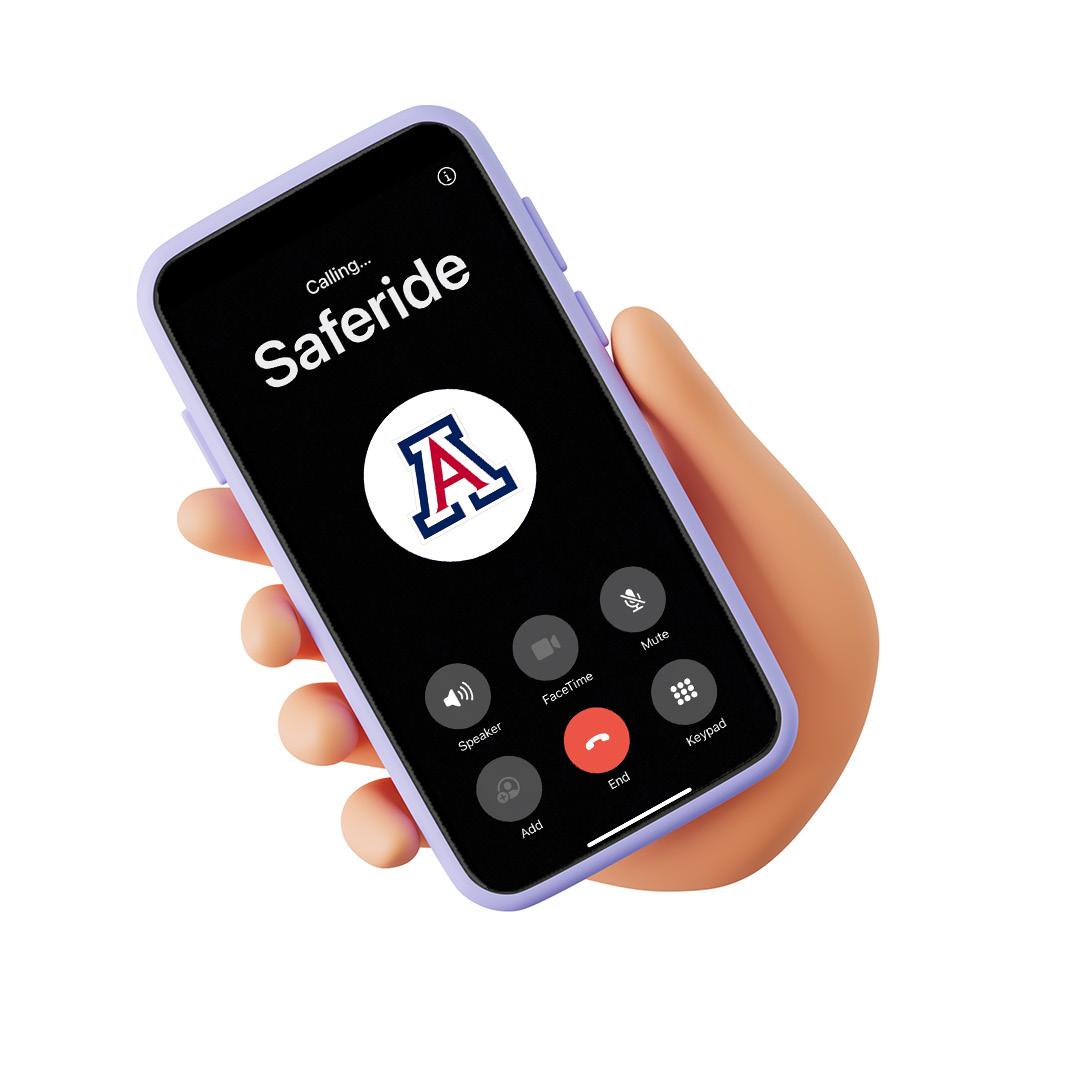





















By Caitlyn










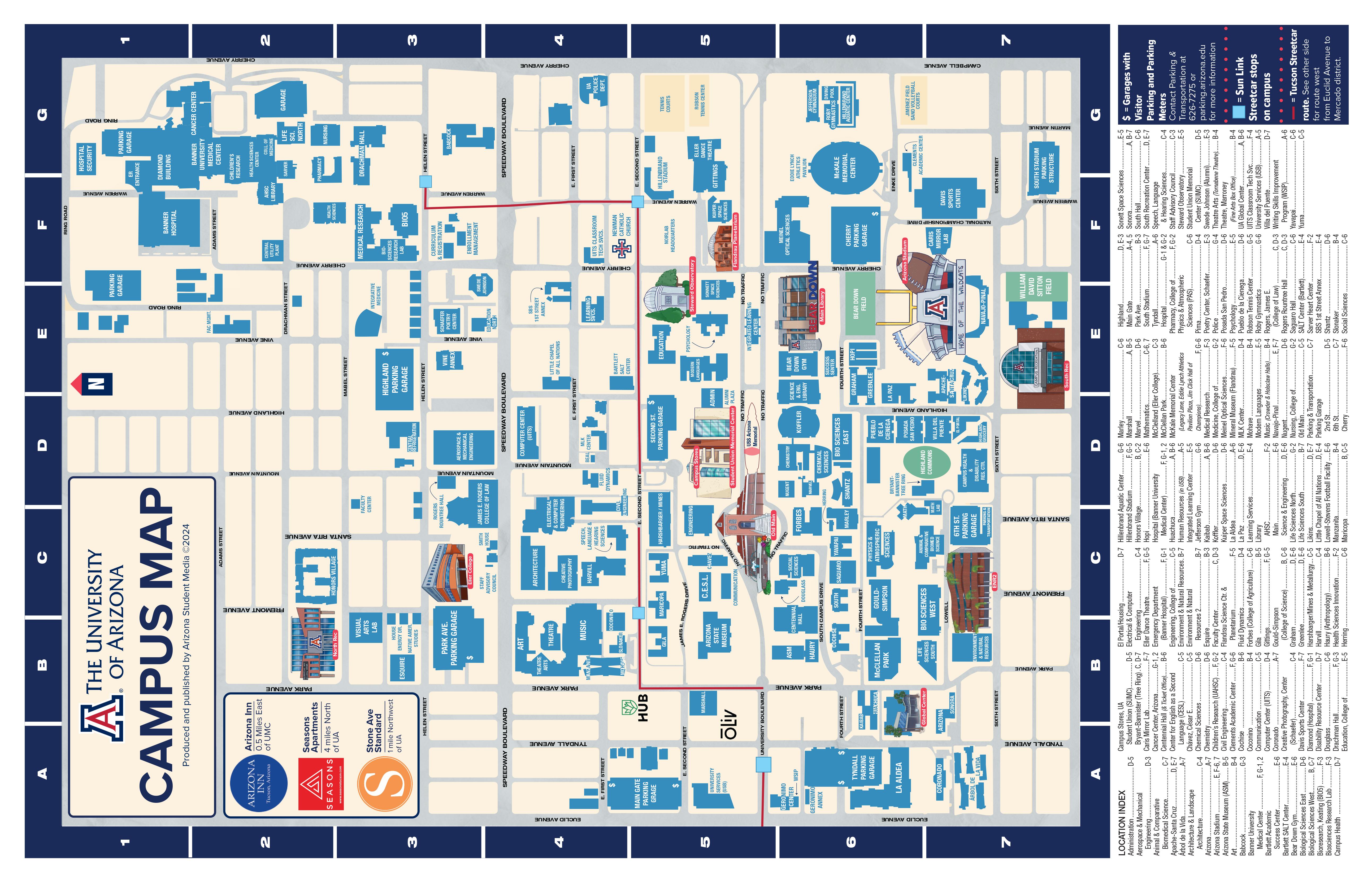

By Andrea Campos, The Daily Wildcat
Want to get a first-hand look at the natural beauty surrounding the University of Arizona? Here are some Tucson trails with the most breathtaking views.




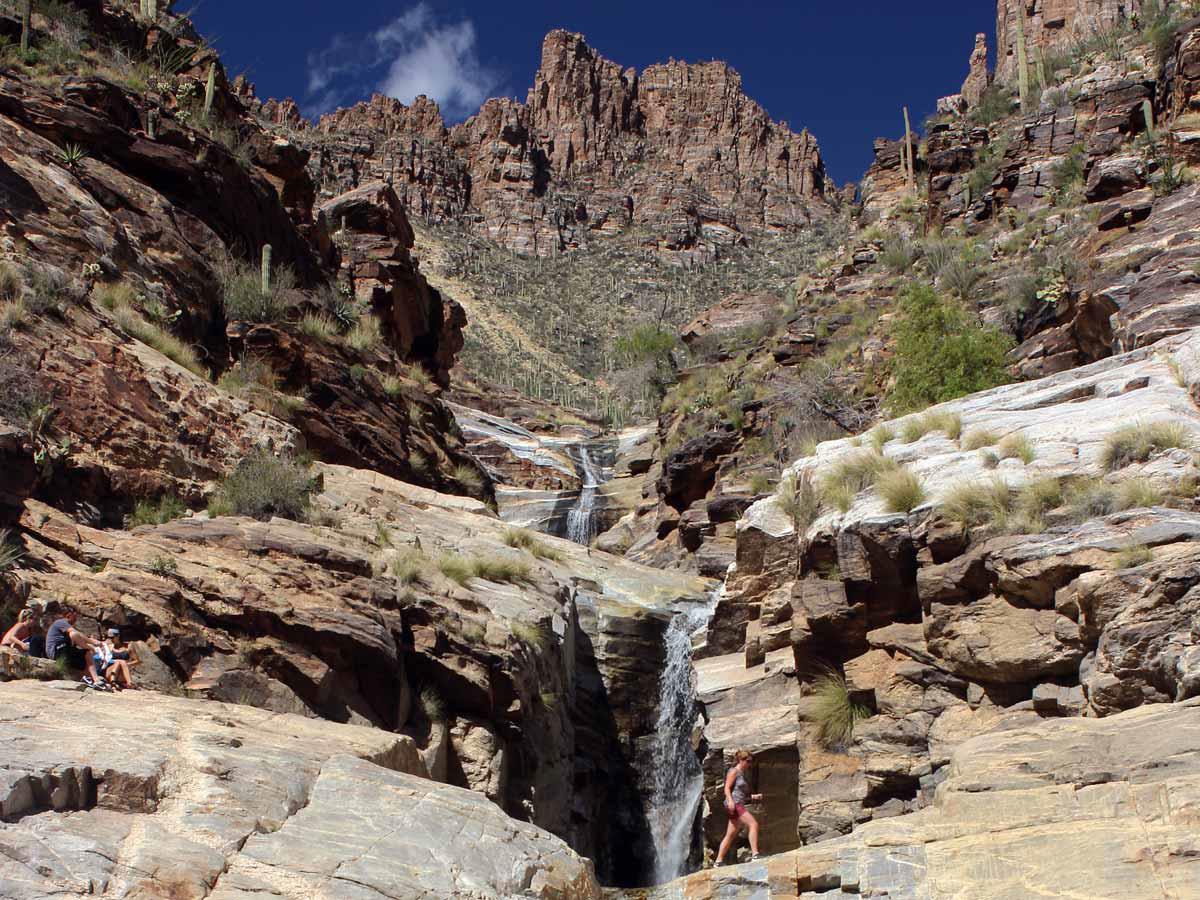
Phoneline Trail & Blacketts Ridge Trail are among some of the most frequented by experienced hikers looking to take advantage of the elevation gains Sabino Canyon has to offer. Phoneline Trail reaches 3,680 feet and is 4 miles long. It is labeled as a ‘moderate’ trail. Blacketts Ridge Trail is 1.6 miles long, but it is considered ‘difficult’, reaching heights 4,400 feet in elevation. When selecting a trail, it is important to make sure a person's expectations are in line with their body’s abilities.
“Our most popular trail is probably the Phoneline Trail. Sometimes people would rather hike Blacketts Ridge because it’s the highest elevation in Sabino Canyon, but if they are unable to because they have a bad knee or other reasons, they go ahead and hike Phoneline,” Vasquez said. The next set of trails are located in Mount Lemmon. These trails are perfect for those looking to escape Tucson’s typical scenery of saguaros and other cacti, as well as for those looking to do some elevation training.

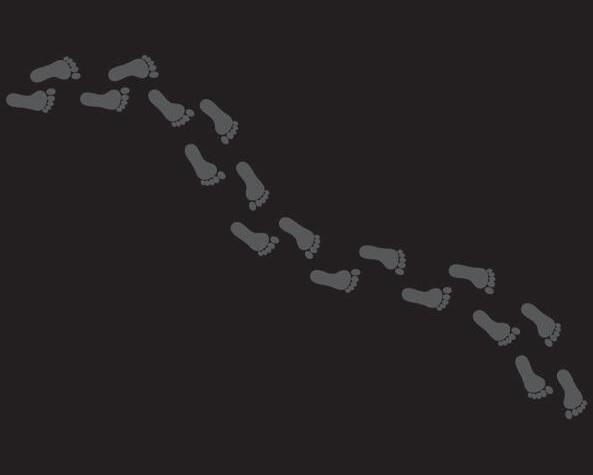











Instead of prickly pear cacti, this 8.5 mile out and back trail leave hikers surrounded by pine trees and of course, aspens! The trees allow for fall colors that are not always visible at elevations. It is a ‘moderate’ trail that peaks at around 9,100 feet. Something to remain mindful of is that on trails such as Aspen Trail, the elevation can affect one’s usual performance level. Hiking with others, especially if someone is not used to the terrain or elevation can make a difference. “It is always nice to be with somebody that knows what they are doing and that’s me talking from personal experience. I’ve been on some hikes in Washington state where no one knew where I was at once I started hiking the trails I was lost,” Vasquez said. “That experience scared me, it was a little discouraging but once I started being more cautious, aware and prepared it got better.”


This trail comes highly recommended by Vazquez, who hiked the trail the summer of 2022 while performing research on the Bighorn Fire for the University of Arizona. “One of the things I like about hiking [in] March through May is that it’s when a lot of the plants are producing flowers. You will see a lot more colors up there, since the plants are flowering you will see more birds and pollinators like butterflies and bees,” Vasquez said. The Butterfly Trail is approximately 11.4 miles, out and back, and reaches an elevation of around 8,500 feet. It is considered ‘moderate to difficult’ and takes over 3 hours to complete, so it is key to keep an eye on the time andthe amount of daylight remaining. “I would say some of the best times to hike the Butterfly Trail would be springtime and also maybe October through the end of November, before the snow hits,” Vasquez said.
If someone is looking for an easy family friendly trail, look n further than Tumamoc Hill. This trail is heavily foot trafficked from the moment it opens at 4 a.m. to its closing at 10 p.m. The hill has an elevation gain of around 700 feet. Mary Whisler and Drew Maziasz, visiting Tucson from Cleveland, participated in a few hikes, one of them being Tumamoc Hill. “It was tougher than I was expecting but I enjoyed it,” Whisler said. “I enjoyed it a lot.”

We read that it was a place where a lot of people go hiking and walking every day and figured we should check it off the list. It was fun. It was nice,“ Maziasz said. Whisler and Maziasz both recommend this short 3 mile, out and back, hike. “Nice views from up top. If you’re looking for an easy well paved trail this is definitely one to do,” Maziasz said. If someone is just getting started hiking and is unsure about how to begin, remember to go to visitor centers and ask which trail is best to attempt. D not hesitate to ask questions! “You can’t force someone to enjoy hiking but for people that are really wanting to start hi and are serious about it, I would say just try to be as prepar as possible,” Vasquez said. “Try going with someone that has a little bit more experience in hiking than you and if they know the trails you want to hike, even better.”





















By Andrea Campos, The Daily Wildcat
This past summer, Hannah Lichtenwalter did not expect to study abroad in Spain and took the above photo in Córdoba, Spain, during her exploration. (Photo courtesy of Hannah Lichtenwalter.) Studying abroad may feel overwhelming for freshmen who are already being flooded with change. However, other Wildcats stress how this should not mean that the opportunity should fly under one’s radar; here are a few tips for those on the fence about studying abroad.
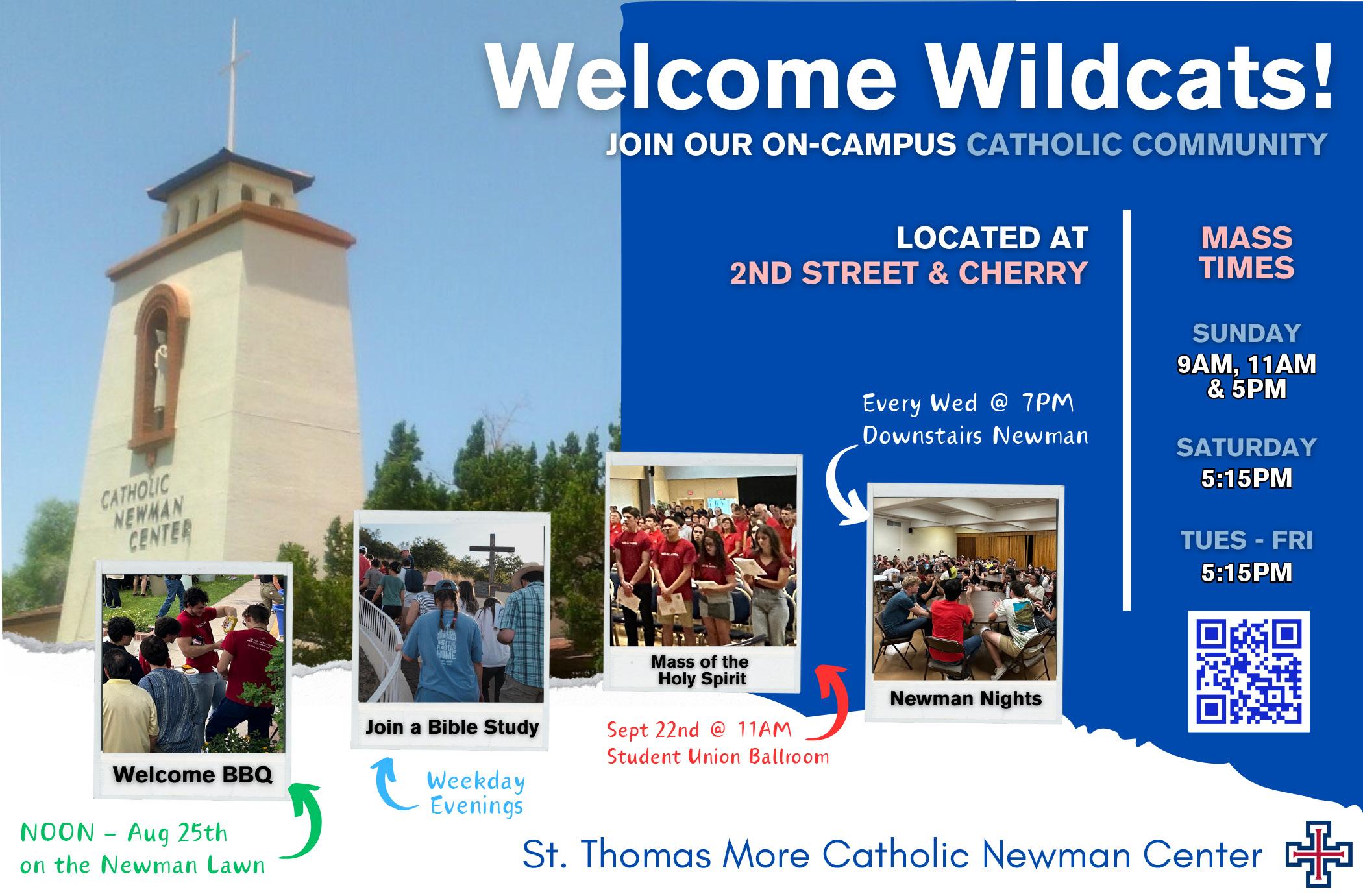


Decide where to travel: The University of Arizona has study abroad programs in various regions, including but not limited to London, Sydney, Costa Rica and Barcelona. However, checking in with academic advisors is essential to ensure the program is compatible with one’s degree. Daryl Ijaola, a biochemical engineering major, studied abroad in Alcalá de Henares, Spain, for four weeks over the summer. “I have already convinced, I think, two or three people to go on the trip next year, and we just got back. I talked to somebody who went before me recently, but if I had talked to them beforehand, they would have convinced me to go. Talk to people and research the city,”
Ijaola said. Hannah Lichtenwalter, a double Africana studies and Spanish major, earned credits toward her degree in Spain. “Look into the culture and traditions of the region, their daily life, [be] respectful and study the basics of the language so you can connect with locals more. Also, mentally prepare for the immersion,” Lichtenwalter said. “People should consider places they might not [have] immediately. Spain was not the first place I would have studied abroad, but I ended up having a really good experience there.”

When one of my students got sick, we waited around 20 minutes to receive medical attention. In total, it cost around 25 euros for all the medication, which was not covered by the insurance but was still very cheap. There was also no co-payment or need to make an appointment,” Sotelo said. Ijaola had some extra tips to share to make one's visit as comfortable as possible. “Overpack. I love to overpack because I hate being unprepared. For example, I forgot to pack my shorts and forgot how hard it is to find some. Prepare a budget for yourself and, if you can, save up too much money. As in, I’d rather have too much and have a lot of freedom spending than not [have] enough and [be] stuck in one place,” Ijaola said. Lichtenwalter shared some advice based on her experience in the study abroad program. “I would recommend looking into the details of the program, [like] if it’s a homestay or if you will be in a dorm. Just consider the level of independence that you want, the length of the program and the culture, because there can definitely be a big culture shock in certain parts of the world. Even in Spain, there were parts that were a lot different and that I enjoyed, but maybe not everyone would,” Lichtenwalter said.
Understand the process and be prepared: Once one has selected a destination, they must fill out an online application on the University of Arizona Study Abroad website for the specific area they are interested in. It is here students decide when and how long they wish to study abroad and get an estimated cost for the trip. Study abroad programs can be during the fall, spring or summer. Abigail Sotelo, a director for the University of Arizona Alcalá de Henares Summer 2023 program, stressed the importance of having one’s U.S. passport ready as early as possible. Sotelo explained that ideally, the process for applying for a U.S. passport should begin alongside the application to the program itself, allowing wiggle room for any COVID-19 delays. “The Alcalá program requires the U.S. passport [to be] ready before the trip because in areas like Seville, Granada and Córdoba, a passport number is needed when buying tickets. Since we do not have an ID from Spain, they need an identification number, and the only number we have is the American passport number,” Sotelo said. Once the application is accepted, one will be prompted to commit to the program by a specific date and submit the necessary documentation. It is crucial to mark important deadlines on one’s calendar to make the process as efficient as possible.






There will also be a pre departure orientation course to complete before the start of the program. This course provides student support services, such as counseling and psychological services for those experiencing homesickness. It will also go into detail on the GeoBlue international emergency medical insurance. “The medical insurance and medical attention in Alcalá was very good and quick.
Take advantage of scholarships: “I think the cost is worth it, but I also think it is important students apply for scholarships. There have been years where money is left over because not enough students apply. It is important to apply and have a very strong recommendation letter ready,” Sotelo said. When asking for a letter of recommendation, Sotelo advises asking a professor with plenty of time to ensure the letter is quality and not rushed. For Lichtenwalter, a scholarship made all the difference. “Applying for scholarships, I got one through the W.A. Franke Honors College. That played a big role in my decision to study abroad,” Lichtenwalter said. While traveling abroad can get expensive, Ijaola remained confident it was worth it, “Especially with the scholarship that lowered it down. The food you get, experiences you get, going to different cities every week. I thought I was going to stay in one city, that is how much I paid for, but you are paying for so much more,” Ijaola said.
Be safe and have fun: In areas like Europe, where pickpockets may be a concern, it is crucial to remain hyper-aware of one’s surroundings and belongings. “You have to use common sense, always. Do not walk around alone at night; you should not do that anywhere. Even if the area is very safe, one must always use common sense,” Sotelo said. “If they are nervous about being robbed, I would suggest keeping your backpack on your front side. [Keep] wallets in the pockets on the front or simply [use] a fanny pack.” While remaining precautious is essential, one should keep an open mind about their surroundings. “It is a life-changing experience. It changes your perspective on how you view the world,” Sotelo said.







Archery
Badminton
Ballroom Dance
Baseball
Cheerleading
Cycling
Equestrian
Fencing Golf
Rodeo
Roller Derby
Roller Hockey
Rugby (M,W)
Soccer
Womens Rugby
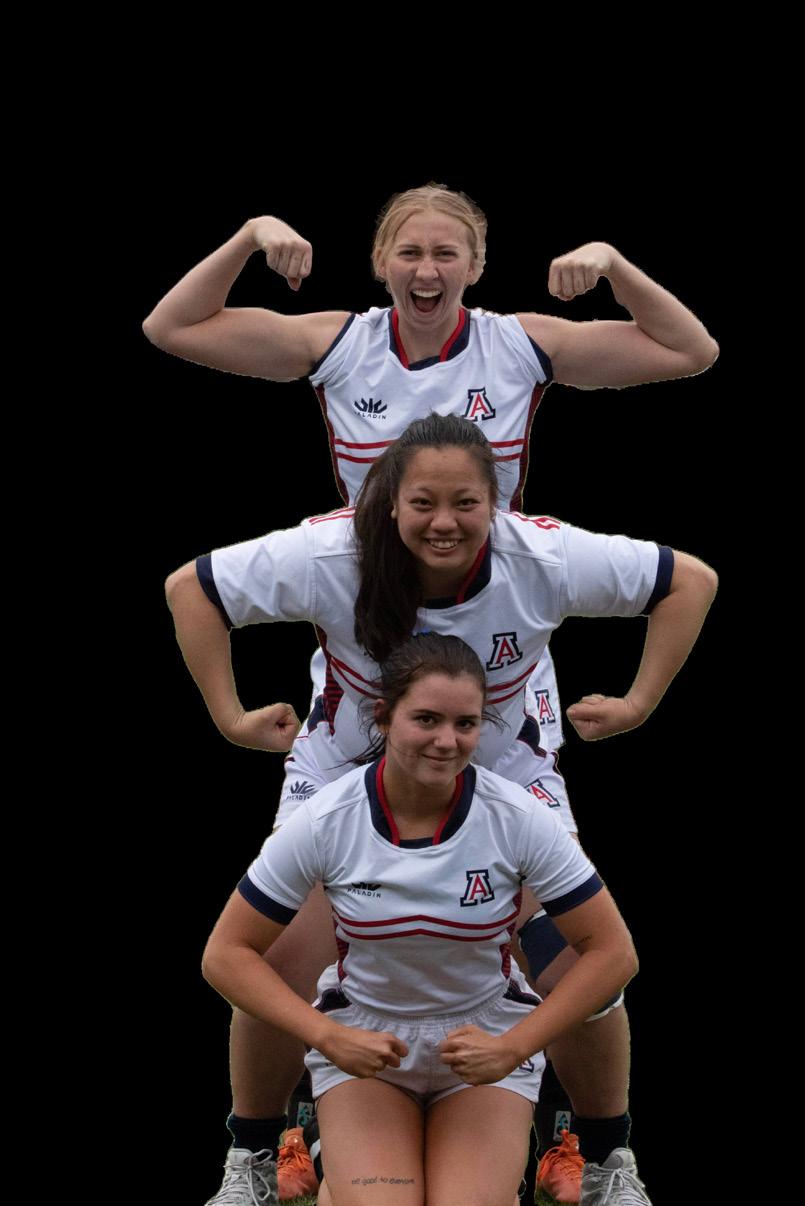
Swim
Synchronized Swimming
Table Tennis
Tennis
Tricats
Ultimate Frisbee (M,W)
Volleyball (M,W)
Water Polo (M,W)
5v5 Basketball
Flag Football
4v4 Sand Volleyball
3v3 Basketball
Cornhole
Tennis Singles
Racquetball Singles
3v3 Pool Basketball
Mario Kart 8 Tourney
Super Smash Bros
Tourney
Madden 23 Tourney
FIFA 24 Tourney
Outdoor Soccer
Kickball
Spikeball
Cornhole
4v4 Indoor Volleyball
Tennis Doubles
Racquetball Doubles
Mario Kart 8 Tourney
Super Smash Bros
Tourney
FIFA 24 Tourney
NBA 2K Tourney
5v5 Basketball
Outdoor Soccer
Kickball
Spikeball
Cornhole
4v4 Indoor Volleyball
Tennis Doubles
Racquetball Doubles
Mario Kart 8 Tourney
Super Smash Bros
Tourney
FIFA 24 Tourney
NBA 2K Tourney
Softball
Flag Football
Indoor Soccer
4v4 Sand Volleyball
3v3 Basketball
Cornhole
Pool Basketball
Pickleball Doubles
Tennis Doubles
Super Smash Bros
Super Smash Bros Tourney
Racquetball Doubles
Mario Kart 8 Tourney
Trivia (Free)




By Susan McMillan
The University of Arizona is home to several cacti, trees and shrubs native to the Sonoran Desert. To kick off your introduction to desert plant life, head to the Alumni Cactus Garden on the east side of Old Main. It’s home to more than 600 native species. The garden provides a place to connect with nature and is a micro-habitat for birds, lizards, insects and other desert creatures.
Tips to help you identify cacti you’ll find across the campus:

stems that reach to the sky. Its clustered limbs can grow stems when there is enough moisture. Dense clusters of red tube- shaped flowers grow from the end of the long stems



Jumping Cholla don't actually jump, but you want to be wary around them just the same. These bushy plants get big and are made up of large branches densely covered in sharp, barbed spines that easily detach from the parent plant. The “jumping” parts then root in new areas after hitching a ride on who or whatever passes by. Jumping cholla can get more than 12 feet high and up to 8 feet across. From May through August, most cholla are covered in small, cheerful pink flowers.



Barrel Cactus rooted on the desert floor. They can be identified by a thick barrel or ball shape and clearly defined vertical ribs covered i long, hooked spines interlaced with smaller furry spines. Both can pack a sting. Barrel cacti in the Sonoran Desert are typically between 2 and 4 feet tall with a diameter up to 2 feet. Funnelshaped flowers bloom at the top of the plant in Spring and are usually bright yellow, orange or red. They only start to appear after many years of growth. These long-lived plants can survive up to 100 years
Prickly Pear are easy to spot. The bushy plants are made up of flat, circular or oval pads. Some varieties have smooth pads, but most are covered in spines. Pads range in color from green to blue gray, to purple or pale yellow. The spines are surrounded by tiny, barbed bristles that can really irritate the skin. The cactus are native to the Americas, but its more than 150 varieties can be found on every continent except Antarctica. Prickly pear flowers typically appear in May and June, with their blooms encouraged by winter and early spring rains and triggered by rising temperatures. In late summer, some varieties of prickly pear fruit is harvested and turned in sweet syrups, juices and jellies. The pads, called nopales, ar also edible and rich in nutrients.
